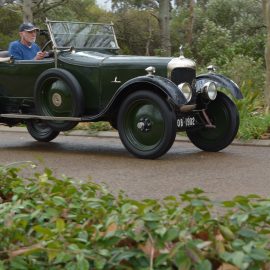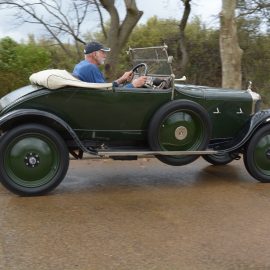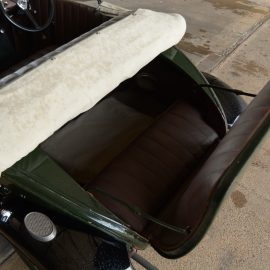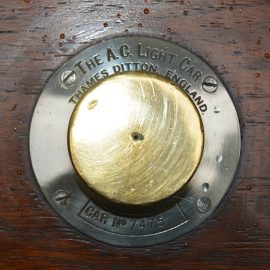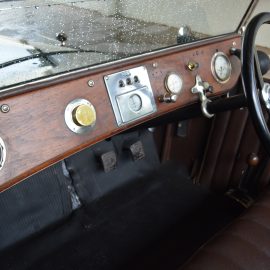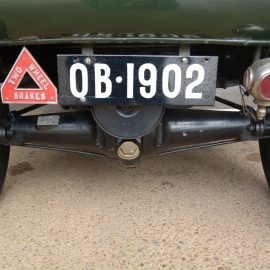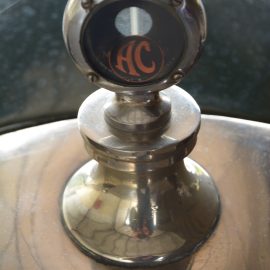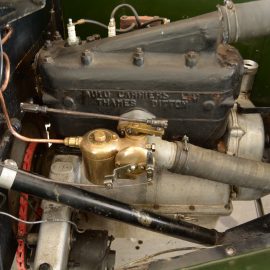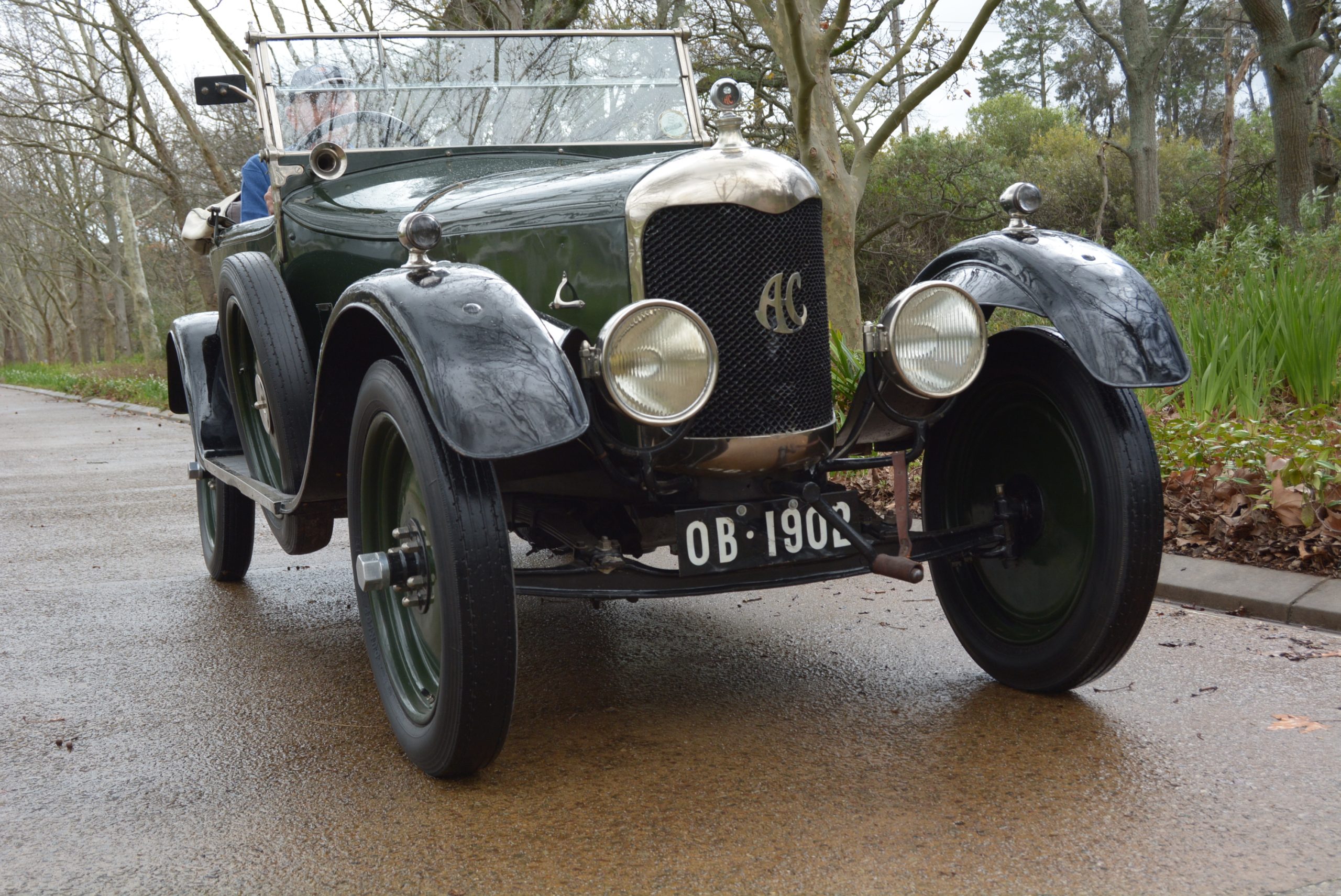
28 Jan Anniversary Celebration
The first in a new series of features covering vehicles in the FMM collection that are celebrating an anniversary during 2022. We start off with a centenarian…
In motoring terms, the letters AC are generally twinned with Cobra, the renowned sports car that appeared in 1962 and has since become a motoring legend. But 60 years ago the independent British company had already been in existence for six decades, and despite a turbulent early history, AC produced some noteworthy vehicles, and the Model 12 was one of them.
When AC opened new offices in Regent Street, London in 1922, the famous English racing driver SF Edge became chairman of a newly-formed company, AC Cars Ltd. And it was in 1922 that FMM’s Model 12 Empire was manufactured. Model 12s were built from 1918 to 1928, and this car is a rare example as very few are known to exist.
The AC has a 1496cc Anzani engine that was designed by former Rolls-Royce employee Gustave Maclure. The motor was the product of everything he had learnt at Rolls-Royce, especially from Henry Royce. It was a superb design, strong, light, reliable and tuneable. Proving the point, a motor was tweaked to 48 kW and installed in a special single-seater AC in which J A Joyce covered 104,85 miles (168,7 km) in one hour at the Brooklands course in December 1922, the first light car to achieve such a feat. The cars were successful in motor sport, particularly hillclimbs and trials.
The car was formerly part of the Greyvensteyn collection and was purchased by Waldie in 1954 when it arrived at the Greyvensteyn garage in Brandfort in need of some running repairs. It was being driven by a young couple from the Reef to Cape Town but the ever astute Waldie must have realised the car’s potential and negotiated a deal to buy the car. Later in the year, Waldie drove the car in the second national Veteran and Vintage Rally. Typically, the car was well maintained and won the concours d’elegance award in its class during the 1979 Castrol National Vintage Car rally.
Waldie went to some lengths to establish the car’s exact year of manufacture, which was not as straightforward as one might expect. Chassis numbers and rear axle codes appear to have been the determining factors and correspondence between Waldie and the AC Owners’ Club in Britain established the car, chassis number 7475, as having being first registered on 19 August 1922. Apart from having only a single door, the axle code and having six wheel nuts identifies this car as an Empire model, rather than the slightly more upmarket Royal, and in 1966 only 10 Empire models were known to exist.
With a surprisingly roomy dickey seat, this tourer qualifies as a 2+2. Entering by the single, passenger-side door and sliding across the leather bench seat, the cockpit is spacious. The simple three-spoke steering wheel is nicely angled, and the pedals are conventionally laid out. Controls and instruments are randomly laid out across the wooden dashboard. A handbrake stands vertically next to the side panel, and alongside is the gear lever nestling in a stout, back-to-front ‘H’ gate – first and reverse are to the right, second and third to the left. Depress the floor-mounted starter button and the Anzani four springs into life without much ado, pulling away with ease. Second gear soon gets the AC up to speed and is the key ratio because there is quite a big jump to top gear.
I am impressed. With a 2 692 mm wheelbase and suspended on quarter-elliptics all round, the ride is really good. Rolling on disc wheels shod with 4.00-19-inch Dunlops, it feels quicker than it is actually going and travelling al fresco merely adds to the sensation. Steering, clutch, gears, brakes are all light in operation so in relative terms the AC is not a tiring car to drive, although with only drum brakes on the rear wheels, retardation needs some forethought.
Just as I was getting into the spirit of the occasion, the clouds hanging over the Franschhoek Mountains opened up to put a damper on the frivolity, necessitating a run for cover, but not before I had experienced the joys of vintage motoring. A hand-operated windscreen wiper about the size of a finger is more ornament than use, but for all that this car certainly fits the bill.
In 1929 the company was caught by the Wall Street Crash and went into voluntary liquidation. Three years later a new range of cars was launched and production remained on a small scale until the outbreak of war in 1939, and restarted in 1947. AC became a public company in 1951 and in 1953 the firm began production of the Ace, which was to form the basis for the Cobra. But AC, one of the oldest independent car brands in Britain, never rose to industry heights again.
The AC Model 12 Empire is currently on view in Hall C.




